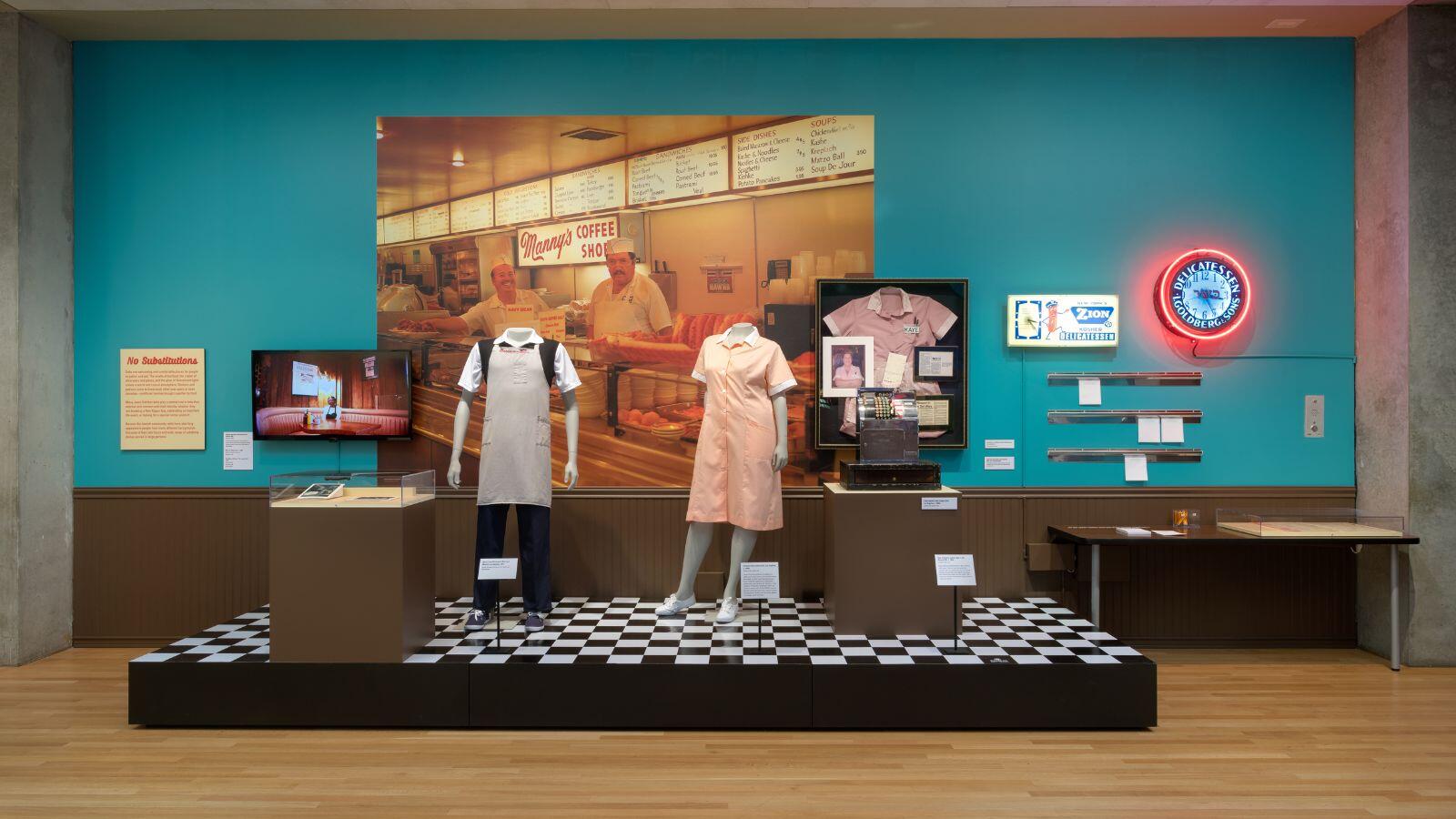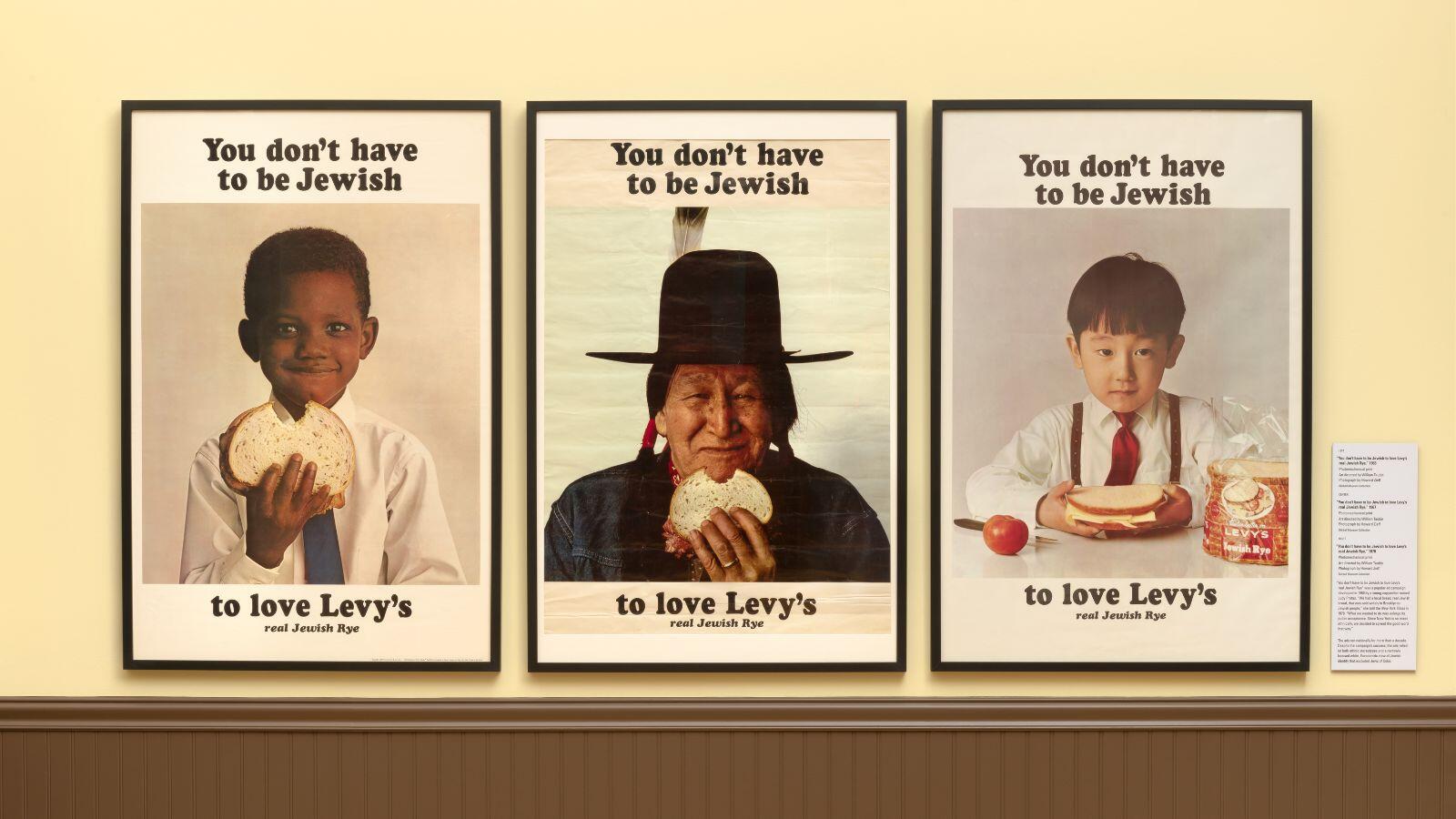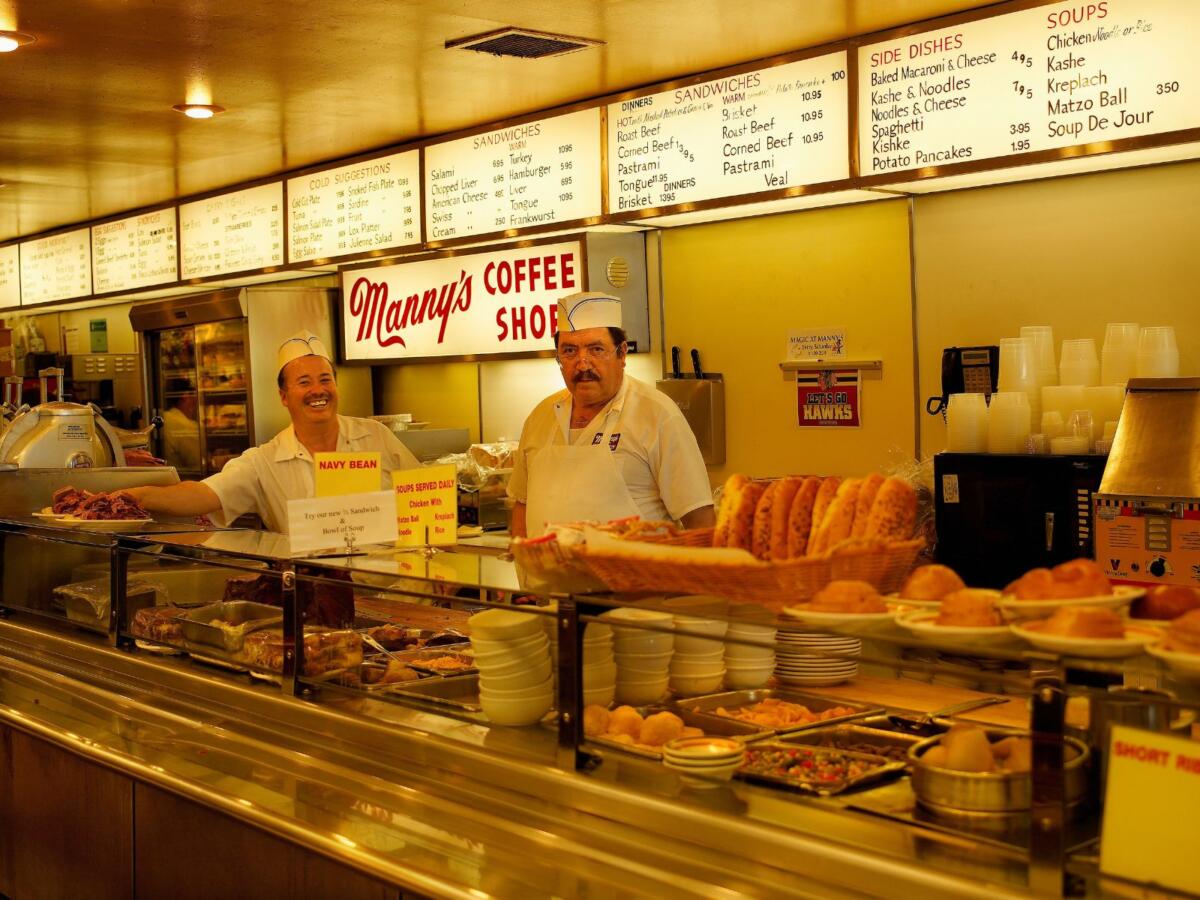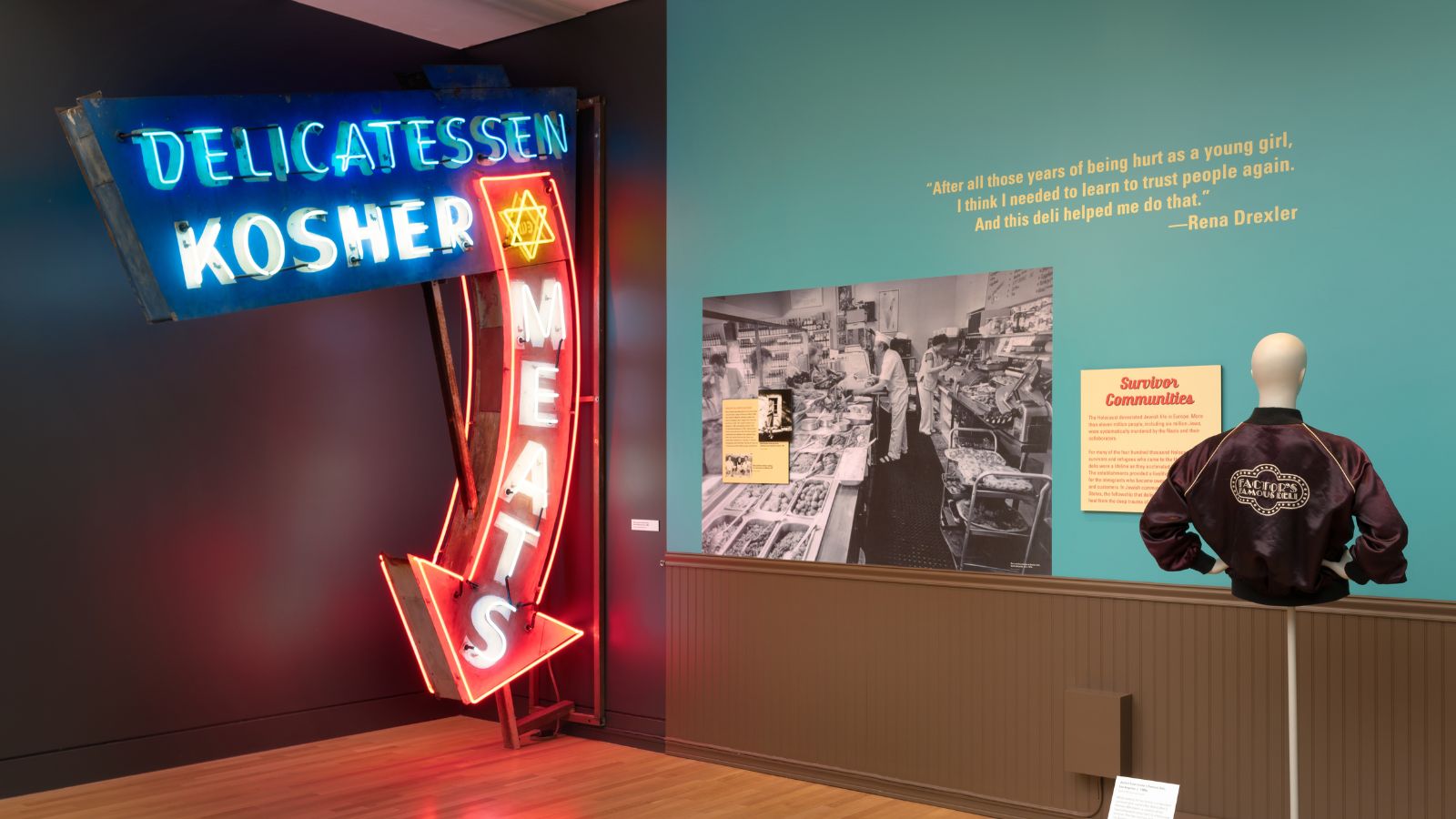It had been a long time since I’d seen my friend, Margo — several decades, in fact. Growing up on the same block in the Flatbush section of Brooklyn, we had been inseparable in childhood. Moves from the East Coast — I to Tucson, she to Los Angeles — and assorted life changes drifted us apart, but we had recently reconnected on Facebook. A quick business trip to LA was an excellent excuse for a reunion — and a stop at a local Jewish deli.
Along with our deli stop, Margo and I visited the Skirball Cultural Center, where I explored the roots of my longing for cured meat (Tucson doesn’t have a single Jewish deli) at the “I’ll Have What She’s Having: The Jewish Deli” exhibition.

At the entryway, guests are greeted by blowups of common deli items: a pickle, a jar of herring, a pastrami sandwich, a bagel and more. There are peek-a-boo cutouts for your face, à la old-time photo studios. This set the tone for the small but rich exhibition, which traces the history of the delicatessen in America with an approach that is both serious and tongue in cheek.
Rare archival footage of pushcart vendors hawking their wares on New York City’s Lower East Side and poignant artifacts such as a battered suitcase brought over by an immigrant family mingle with humorous displays like a Yiddish lexicon of deli terms, retro waitress uniforms, and a reproduction of the sign on Katz’s deli during World War II that exhorts patrons to “Send a Salami to Your Boy in the Army.”
The Nosher celebrates the traditions and recipes that have brought Jews together for centuries. Donate today to keep The Nosher's stories and recipes accessible to all.
Mixing earnestness and kitsch, the exhibit explores the transition from the pushcarts and butcher shops with a few tables in New York to the brick-and-mortar establishments with cushy booths that became a requisite stop for politicians wanting to schmooze members of Jewish communities around the country — including, of course, those of Los Angeles.

With a self-reflection that is arguably as Jewish as its subject, the exhibition doesn’t shy away from an awareness that the deli, created by Eastern and Central European immigrants, is an almost exclusively Ashkenazi institution, and thus limited in its view of Jewish life and culture. Take, for example, the commentary on the posters featuring the famous “You don’t have to be Jewish to love Levy’s” series of rye bread ads. Considered progressive for their time because of the diversity of the models, in retrospect the ads suggest that racial diversity among the Jewish community is an anomaly, which is not the case.
The contemporary menus on display incorporate more Israeli and Sephardi dishes than they did in the past, and emphasize ethical (as opposed to strictly religious) practices. One bill of fare proudly notes that its pastrami and corned beef come from cows that were never administered hormones or antibiotics.
I came away from the Skirball Cultural Center steeped in nostalgia for the platonic ideal of the deli, which resides in the past. One of the most popular features of “I’ll Have What She’s Having” is an area where visitors can write down their favorite deli recollections on what looks like an order ticket and pin them up on a simulated order line. At the end of some weeks, the staff collects more than a 100 such nostalgic notes. As attested by the title of the exhibition, an allusion to the classic line from “When Harry Met Sally,” as well as by clips from other films and TV shows that run in a continuous loop, the Jewish deli is as much a state of mind as a reality, Hollywood shorthand for a world where Jews congregate, have a nosh, make jokes and create memories.

Snack at Manny’s Delicatessen, Chicago, IL, 2010. Image Professionals GmbH / Alamy Stock Photo
Which was why, I realized, going to a deli with Margo had felt so soul soothing. Giving depth to the corned beef, chopped liver, potato salad and half-sour pickles copiously laid out on our table were the tastes and smells of childhood, liberally seasoned with laughter and reminiscences of places and people we’d known when the world was all before us.
“I’ll Have What She’s Having: The Jewish Deli” will be at the Skirball Cultural Center through September 4. After that, it can be seen at the New York Historical Society (November 11, 2022—April 2, 2023); the Holocaust Museum, Houston, TX (May 4–August 13, 2023); and the Illinois Holocaust Museum & Education Center, Skokie, IL (October 22, 2023–April 14, 2024).



